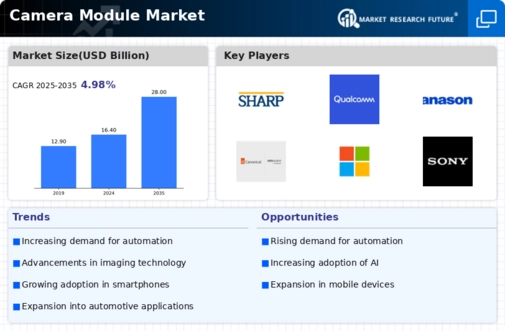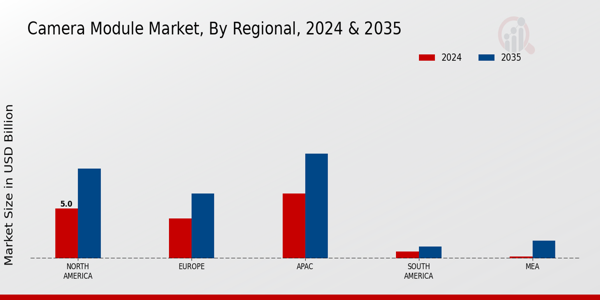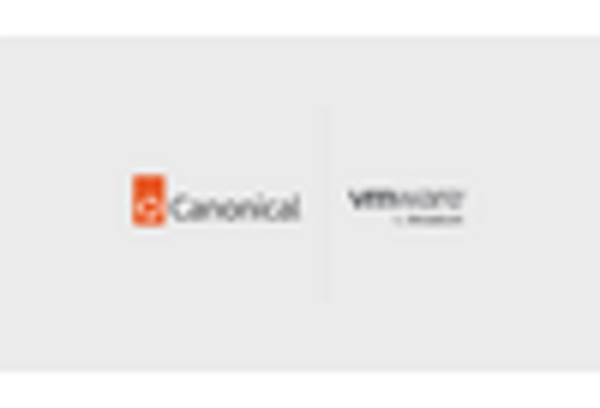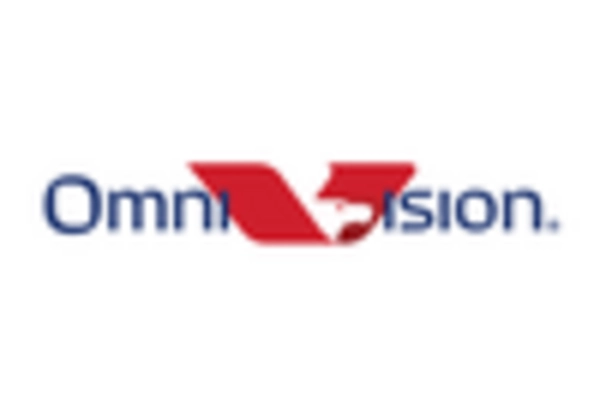Growth in Automotive Sector
The automotive sector's rapid evolution towards advanced driver-assistance systems (ADAS) is significantly influencing the Camera Module Market. As vehicles increasingly incorporate features such as lane departure warnings, parking assistance, and collision avoidance systems, the demand for high-quality camera modules is surging. Recent statistics indicate that the automotive camera market is expected to reach a valuation of several billion dollars by 2026, reflecting a robust growth trajectory. This growth is largely attributed to the rising consumer preference for safety features and the push for autonomous driving technologies. Consequently, camera module manufacturers are focusing on developing modules that can withstand harsh environmental conditions while delivering superior image quality.
Emergence of Smart Home Devices
The rise of smart home technology is reshaping the Camera Module Market. As consumers increasingly adopt smart home devices, the integration of camera modules into these systems has become commonplace. Smart doorbells, security cameras, and home monitoring systems are now equipped with advanced camera modules that offer features such as real-time video streaming and motion detection. Market forecasts indicate that the smart home security camera segment is likely to witness significant growth, driven by consumer demand for convenience and security. This trend encourages manufacturers to innovate and enhance the functionality of camera modules, ensuring they meet the evolving needs of tech-savvy consumers.
Rising Demand for Surveillance Systems
The increasing emphasis on security and surveillance has propelled the Camera Module Market forward. With urbanization and population growth, the need for effective surveillance systems has become paramount. According to recent data, the demand for security cameras is projected to grow at a compound annual growth rate of approximately 10 percent over the next five years. This trend is driven by both residential and commercial sectors seeking enhanced security solutions. As a result, manufacturers are innovating camera modules that offer higher resolution, improved low-light performance, and advanced analytics capabilities. The integration of artificial intelligence in surveillance systems further enhances the functionality of camera modules, making them indispensable in modern security frameworks.
Advancements in Image Processing Technologies
The Camera Module Market is experiencing a transformation due to advancements in image processing technologies. Enhanced image processing capabilities allow camera modules to deliver superior image quality, even in challenging lighting conditions. Recent developments in machine learning and artificial intelligence are enabling camera modules to perform complex tasks such as facial recognition and scene analysis. This technological evolution is likely to drive the adoption of camera modules across various sectors, including security, automotive, and consumer electronics. As image processing technology continues to advance, manufacturers are expected to invest in research and development to create camera modules that not only meet but exceed consumer expectations.
Integration of Camera Modules in Consumer Electronics
The proliferation of camera modules in consumer electronics is a key driver of the Camera Module Market. With the advent of smartphones, tablets, and wearable devices, the demand for high-performance camera modules has escalated. Recent market analysis suggests that the smartphone camera module segment alone is expected to account for a substantial share of the overall market, driven by consumer preferences for high-resolution photography and video capabilities. Manufacturers are responding by innovating camera modules that support features such as optical zoom, image stabilization, and enhanced low-light performance. This trend not only caters to consumer demands but also fosters competition among manufacturers to deliver cutting-edge technology.

















Leave a Comment